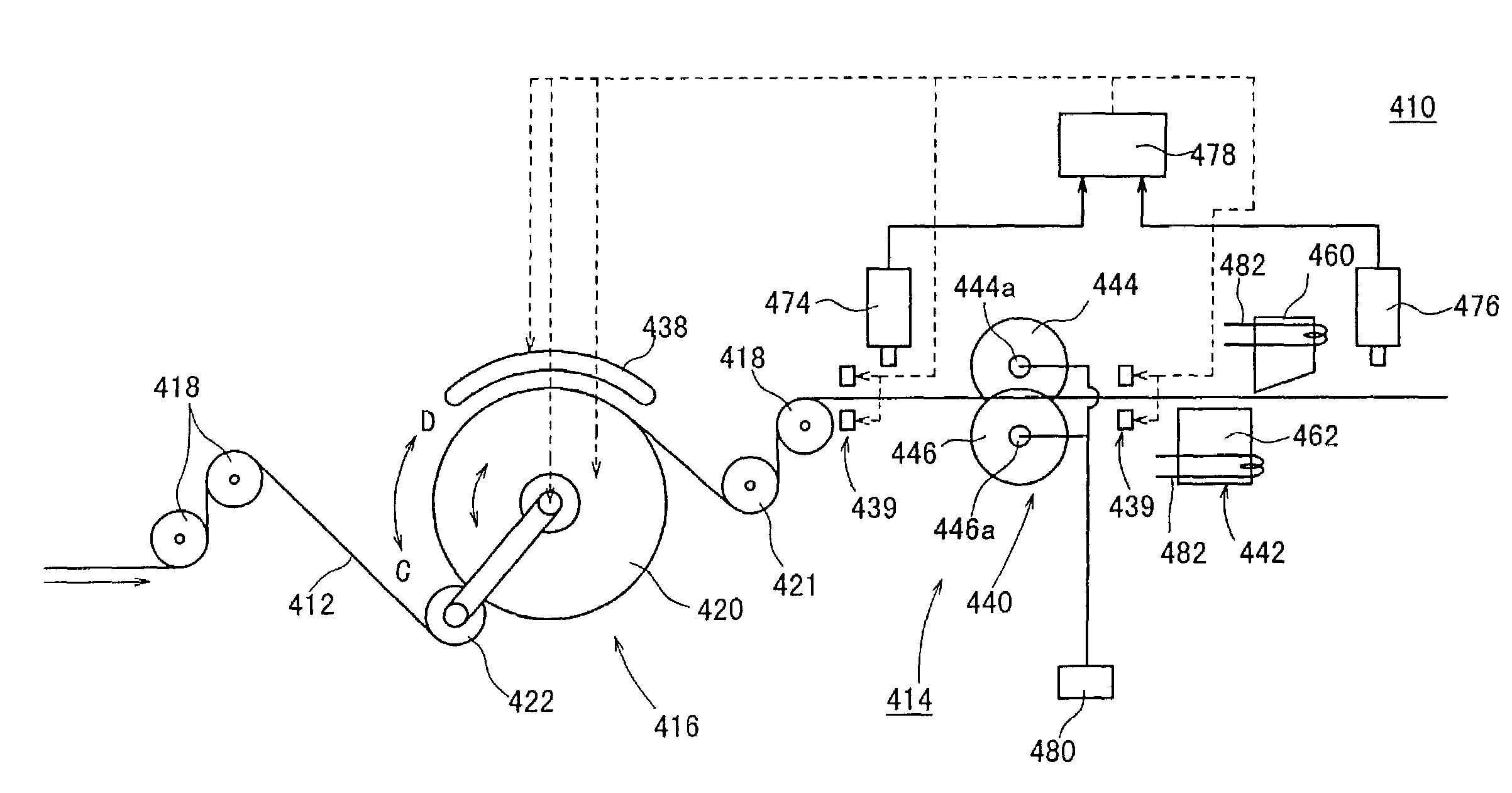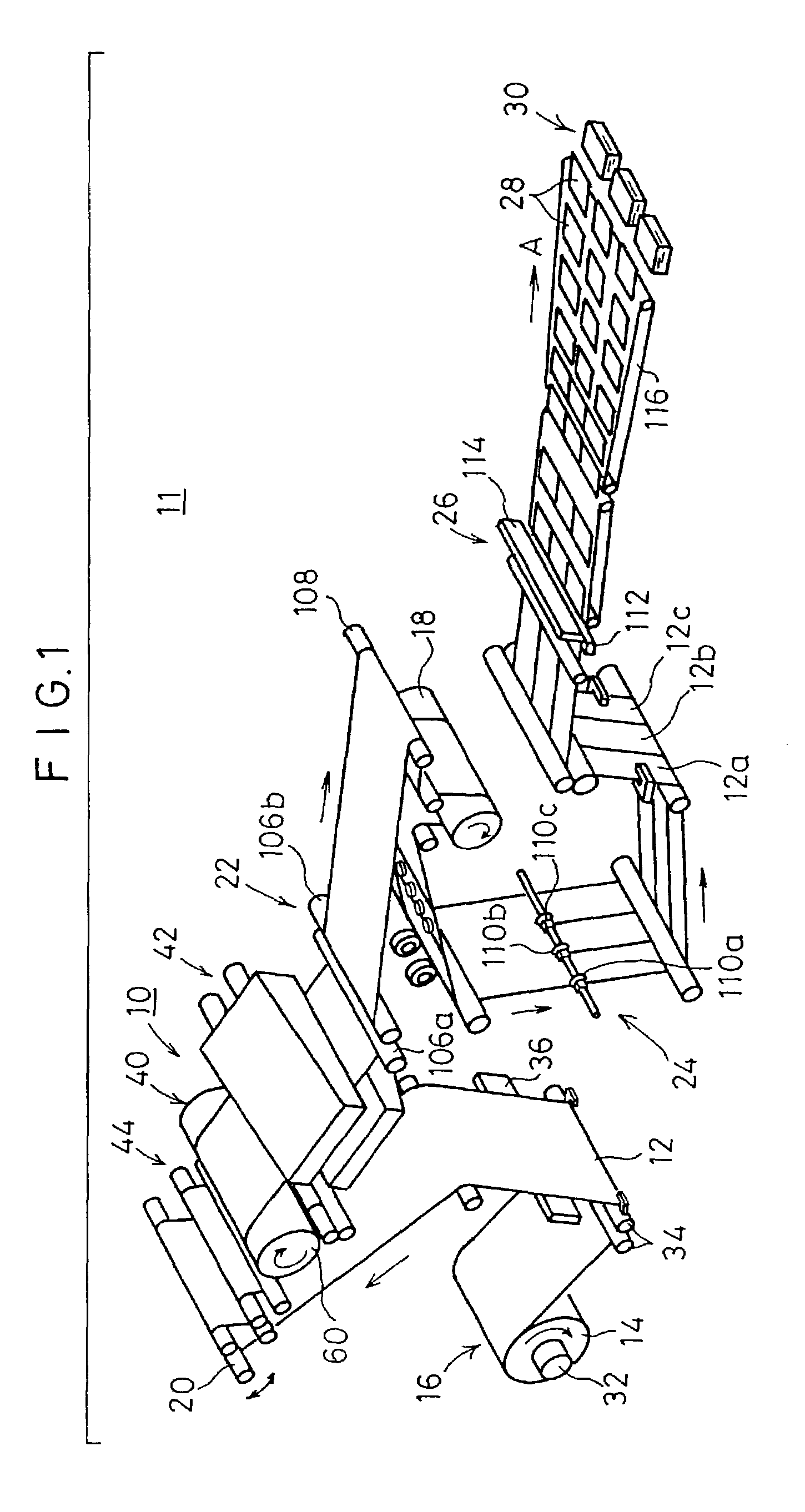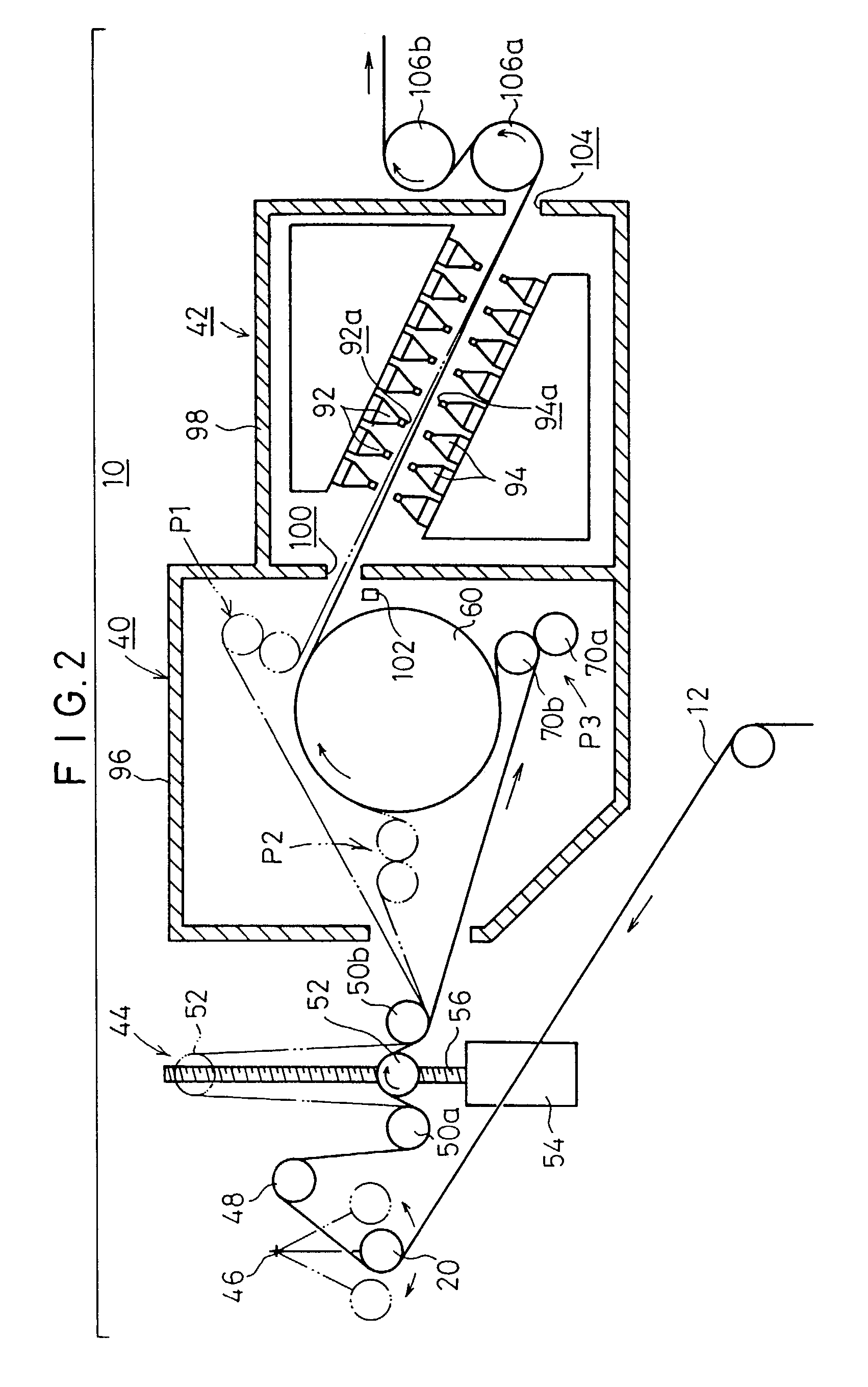Sheet material cutting method for cutting thermal imaging material
- Summary
- Abstract
- Description
- Claims
- Application Information
AI Technical Summary
Benefits of technology
Problems solved by technology
Method used
Image
Examples
first embodiment
[0098]FIG. 1 is a perspective explanatory view showing a schematic construction of a sheet film processing system 11, into which a decurl apparatus (or deformation correcting apparatus) 10 according to the invention is incorporated.
[0099]This sheet material processing system 11 is constructed to include: a web unwinder 16, in which a roll film 14 having an image recording carrier web (or sheet material) 12 rolled thereon is mounted, for letting off the image recording carrier web 12 from the roll film 14; a main feeding suction drum 18 for feeding the image recording carrier web 12 at a predetermined velocity from the web let-off unit 16; a dancer roller 20 for adjusting the tension of the image recording carrier web 12; the decurl apparatus 10, as arranged downstream of the dancer roller 20, and a cooler unit 22 for cooling the image recording carrier web 12, as let off the decurl apparatus 10; a slitter unit 24 arranged downstream of the suction drum 18, for slitting the image rec...
third embodiment
[0143]FIG. 13 is a schematic diagram for explaining heating means 160 composing a decurl apparatus according to the invention.
[0144]The heating means 160 is equipped with: first and second heating rollers 162 and 164 for lapping the image recording carrier web 12 thereon in the S-shape at a predetermined spacing from each other; and drive means 168 for turning the first and second heating rollers 162 and 164 integrally on a middle point 166 of the straight line joining the individual centers of the first and second heating rollers 162 and 164.
second embodiment
[0145]These first and second heating rollers 162 and 164 are heated like the heating roller 60 by the induction heating method to a temperature exceeding the glass transition temperature (Tg) of the support of the image recording carrier web 12. On the other hand, the drive means 168 is provided with the (not-shown) worm gear, as in the holding roller displacing means 144 composing the decurl apparatus 140 according to the
[0146]In the heating means 160 thus constructed, when the first and second heating rollers 162 and 164 are arranged at a position P1a, as indicated by solid lines, the image recording carrier web 12 is lapped within a predetermined range (of a lapping angle of 200 degrees, for example) around the first and second heating rollers 162 and 164 so that it is subjected to the heating treatment from its support side.
[0147]When the image recording carrier web 12 is transferred at a low velocity, the first and second heating rollers 162 and 164 are turned in the direction ...
PUM
| Property | Measurement | Unit |
|---|---|---|
| Thickness | aaaaa | aaaaa |
| Thickness | aaaaa | aaaaa |
| Glass transition temperature | aaaaa | aaaaa |
Abstract
Description
Claims
Application Information
 Login to View More
Login to View More - Generate Ideas
- Intellectual Property
- Life Sciences
- Materials
- Tech Scout
- Unparalleled Data Quality
- Higher Quality Content
- 60% Fewer Hallucinations
Browse by: Latest US Patents, China's latest patents, Technical Efficacy Thesaurus, Application Domain, Technology Topic, Popular Technical Reports.
© 2025 PatSnap. All rights reserved.Legal|Privacy policy|Modern Slavery Act Transparency Statement|Sitemap|About US| Contact US: help@patsnap.com



